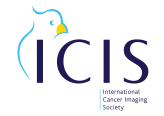30 April 2012
Prof Alain Rahmouni participates in ongoing study assessing dynamic contrast enhanced whole body MRI
Assessment of Dynamic Contrast Enhanced Whole Body MRI (WB-DCE- MRI) as independent prognostic factor for disease-free survival in multiple myeloma after intensification therapy and autologous stem cell transplantation
Alain Luciani, Chieh Lin*, Alain Rahmouni
Department of Medical Imaging, Academic Henri Mondor Hospital, Assistance-Publique-Hôpitaux de Paris, Créteil, France
* Department of Nuclear Medicine and Molecular Imaging Center, Chang Gung Memorial Hospital, Taoyuan, Taiwan
We here report an ongoing multicentric French national study promoted by Assistance Publique-Hopitaux de Paris (EVALICEMM study ID P081236 / AOM 09252)
Bone marrow angiogenesis is increased in multiple myeloma (MM) and is an important prognostic factor for survival. Newly diagnosed MM patients have higher microvessel density (MVD) than controls on bone marrow biopsies. In addition, patients with higher MVD, receiving conventional chemotherapy or high-dose therapy with autologous stem cell transplantation, have shorter median overall survival than those with lower MVD by using the median MVD as the cutoff. In a study with 81 patients with MM treated with thalidomide with or without dexamethasone, MVD decreased significantly in responders while no significant change in MVD was seen in those failing to respond to thalidomide.
Microcirculation variables derived from dynamic contrast-enhanced magnetic resonance (DCE-MR) imaging, i.e. maximum enhancement and the exchange rate constant, correlate well with the histologic infiltration grade, MVD and serum markers of disease activity. The maximal amplitude of lumbar bone marrow enhancement on DCE-MR examination has also been identified as a prognostic variable for event-free survival (EFS) in progressive MM. These parameters may serve as non-invasive surrogate biomarkers for determining prognosis and for assessing treatment response in myeloma patients. However, these studies used techniques which were limited to a maximal 400-mm field of view, whereas myeloma can involve the bone marrow focally, diffusely throughout the body, or even outside the marrow space. With the advancement of MR technologies, unenhanced whole-body MR imaging has proven more reliable than radiological skeletal survey and whole-body multidetector computed tomography in patients with MM.
Whole-body single-phase contrast-enhanced sequence was ever applied in combination with unenhanced sequences for the detection of myeloma lesions. However, single-phase post-contrast MR examinations do not provide detailed enhancement curves, and this limitation possibly hinders the assessment of disease activity. On the other hand, segmental dynamic MR examinations do not enable assessment of the dynamic enhancement of focal lesions in different bone marrow segments. That was the reason which led us to develop a whole-body dynamic contrast-enhanced magnetic resonance imaging (WB-DCE-MRI) protocol, which was never explored in MM
The treatment of patients with MM was largely palliative until, with the advent of high-dose melphalan, high rates of complete response (CR) could be obtained. For previously untreated patients aged 65 years or younger, high-dose therapy (HDT) followed by autologous stem cell transplantation (ASCT) with growth-factor-mobilized peripheral-blood stem cells (PBSCs) have been demonstrated superior to conventional chemotherapy with not only higher CR rates but also significantly extending EFS and overall survival. The International Myeloma Working Group proposed new uniform response criteria in 2006 to facilitate precise comparisons between new evolving treatment strategies. As a functional imaging providing parameters related to angiogenesis and disease activity in MM, WB-DCE-MRI might provide additional information on prognostically important microcirculation variables on a whole-body scale. It might also prove helpful in assessing treatment response and further treatment strategy decision for patients with oligo- or nonsecretory disease.
The main objective of this study is to examine if absence of a satisfactory response on WB-DCE-MRI after completion of HDT followed by ASCT is an independent prognostic factor for EFS in patients with MM, compared with established ones including b2-microglobulin and cytogenetic abnormalities. Secondary objectives are to examine if the microcirculation parameters obtained from baseline DCE-WB-MRI have prognostic significance and to examine if early DCE-WB-MRI performed after the induction HDT and before ASCT might also provide independent prognostic information for patient outcome, which might help in patient stratification and be integrated into the response criteria in the future.
The main objective of this study is to examine if absence of a satisfactory response on WB-DCE-MRI after completion of HDT followed by ASCT is an independent prognostic factor for EFS in patients with MM, compared with established ones including b2-microglobulin and cytogenetic abnormalities. Secondary objectives are to examine if the microcirculation parameters obtained from baseline DCE-WB-MRI have prognostic significance and to examine if early DCE-WB-MRI performed after the induction HDT and before ASCT might also provide independent prognostic information for patient outcome, which might help in patient stratification and be integrated into the response criteria in the future.
Four academic institutions are involved in this ongoing prospective study in France including Centre Hospitalo-Universitaire (CHU) Henri Mondor, Créteil, main investigator center of the study, CHU St Louis, Paris; CHU Dijon; CHU Montpellier.
References on DCE-WB-MRI
- Whole-body diffusion weighted imaging in lymphoma. Lin C, Itti E, Luciani A, Haioun C, Meignan M, Rahmouni A. Cancer Imaging 2010; 10 Spec no A: S172-8
- Whole body MRI and PET/CT in haematological malignancies. Lin C, Luciani A, Itti E, Haioun C, Rahmouni A. Cancer Imaging 2007; 7 Spec No A: S88-93
- Multiple myeloma treatment response assessment by whole-body dynamic contrast-enhanced MR Imaging. Lin C, Luciani A, Belhadj K, Deux JF, Kuhnowski F, Maatouk M, Beaussart P, Cuenod CA, Haioun C, Rahmouni A. Radiology 2010;254:521-531
- Patients with plasma cell disorders examined at whole-body dynamic contrast-enhanced MR Imaging : initial experience. Lin C, Luciani A, Belhadj K, Maison P, Vignaud A, Deux JF, Zerbib P, Pigneur F, Itti E, Kobeiter H, Haioun C, Rahmouni A. Radiology. 2009 ; 250(3):905-15
- Patients with plasma cell disorders examined at whole-body dynamic contrast-enhanced MR Imaging : initial experience. Lin C, Luciani A, Belhadj K, Maison P, Vignaud A, Deux JF, Zerbib P, Pigneur F, Itti E, Kobeiter H, Haioun C, Rahmouni A. Radiology. 2009 ; 250(3):905-15
Tweet
